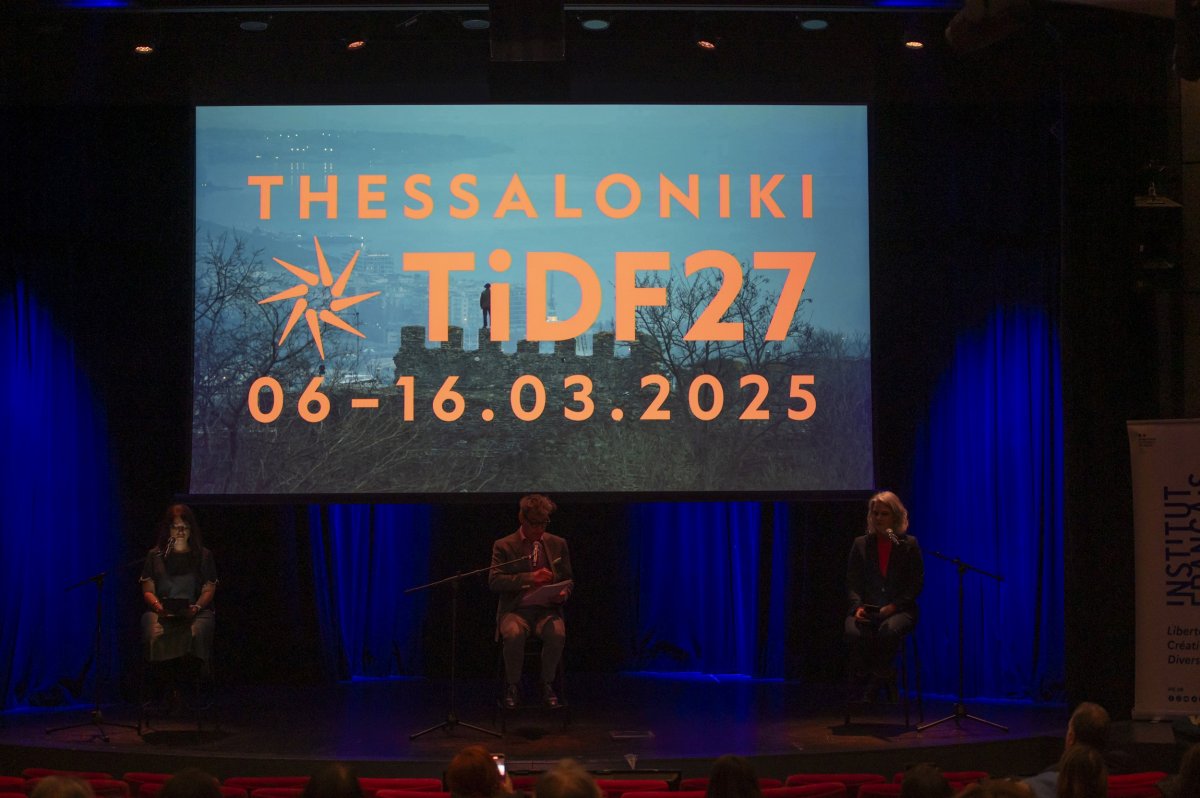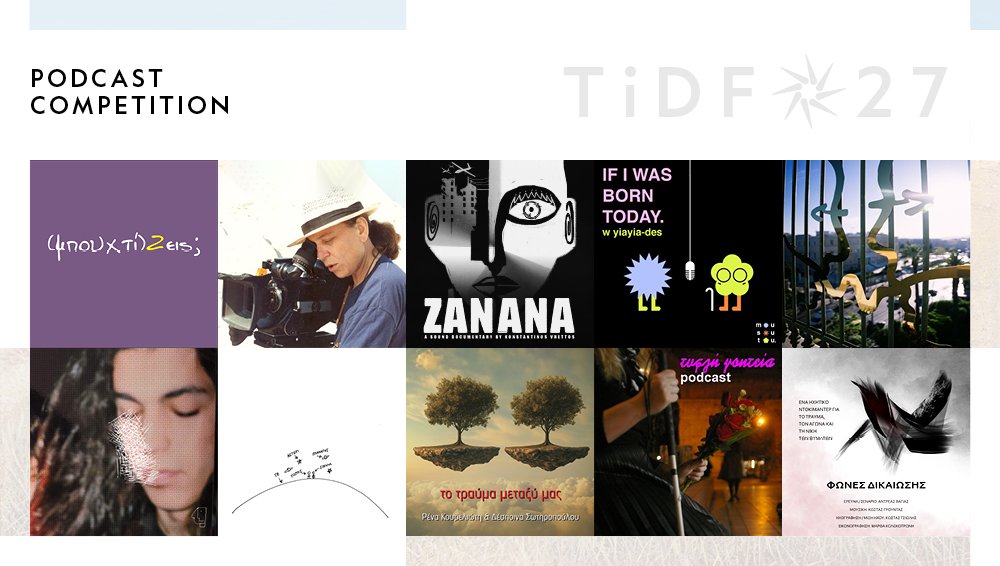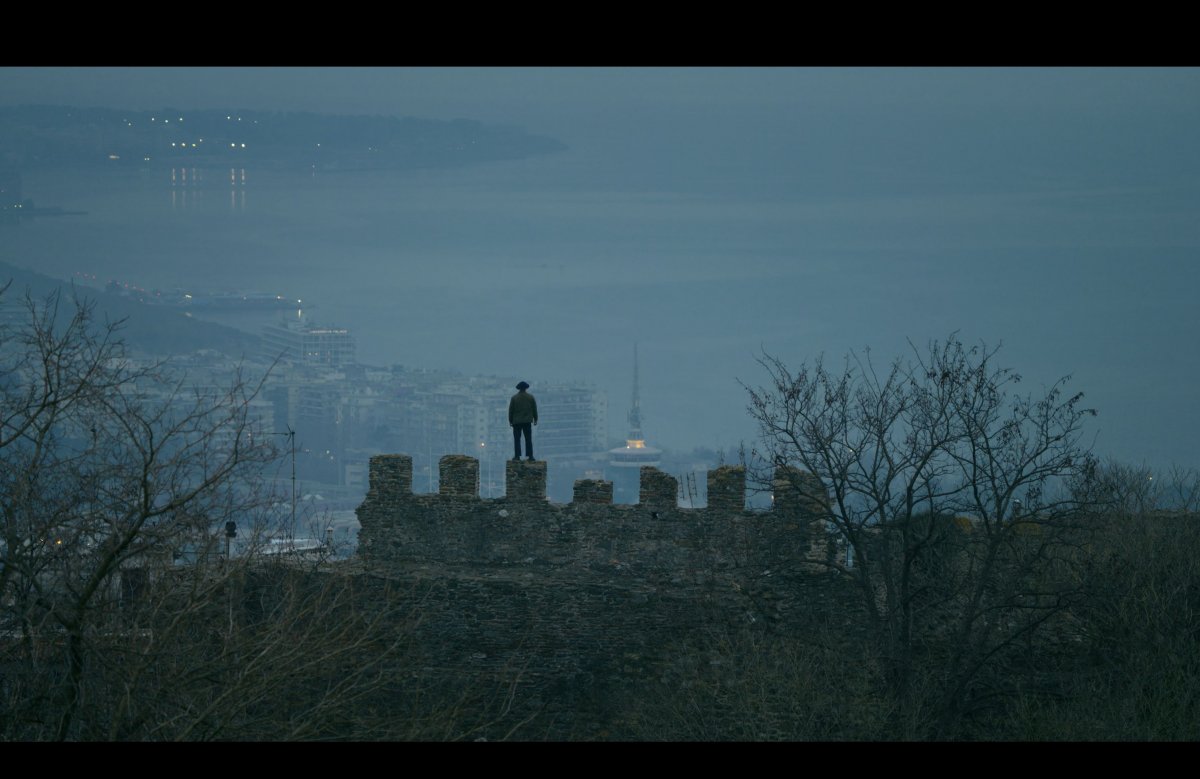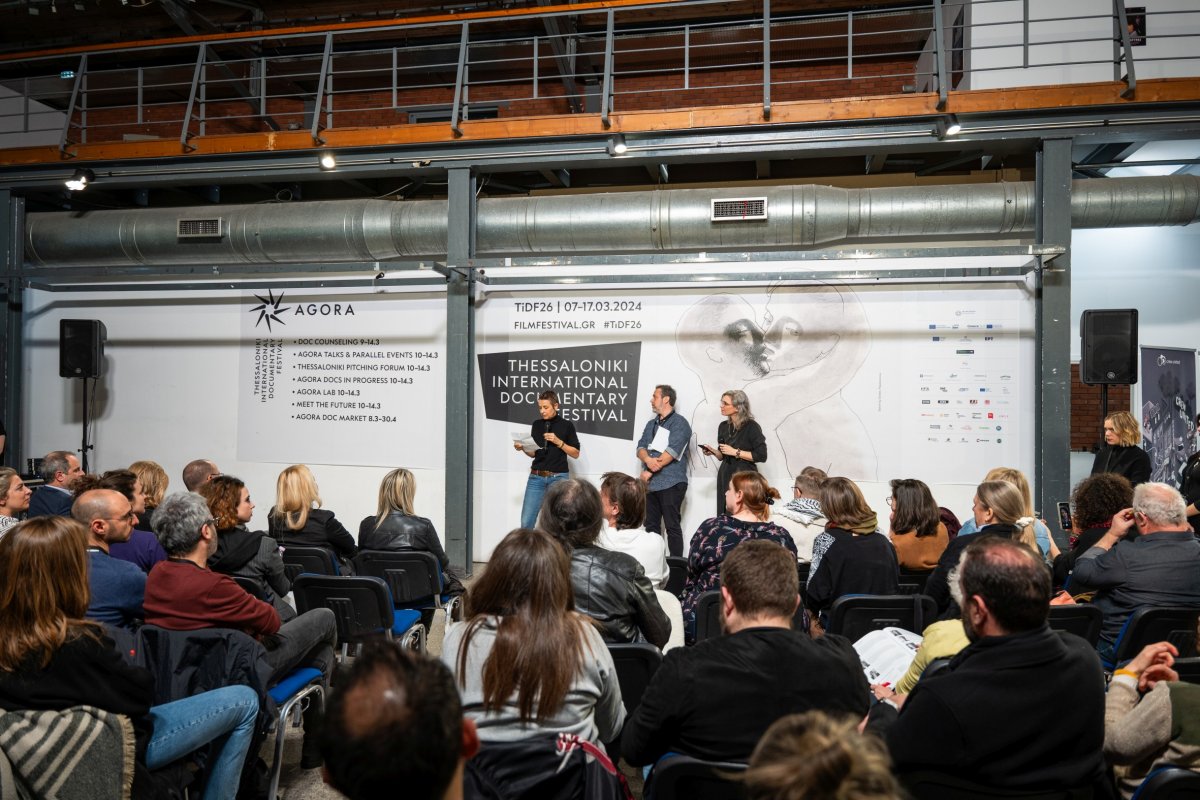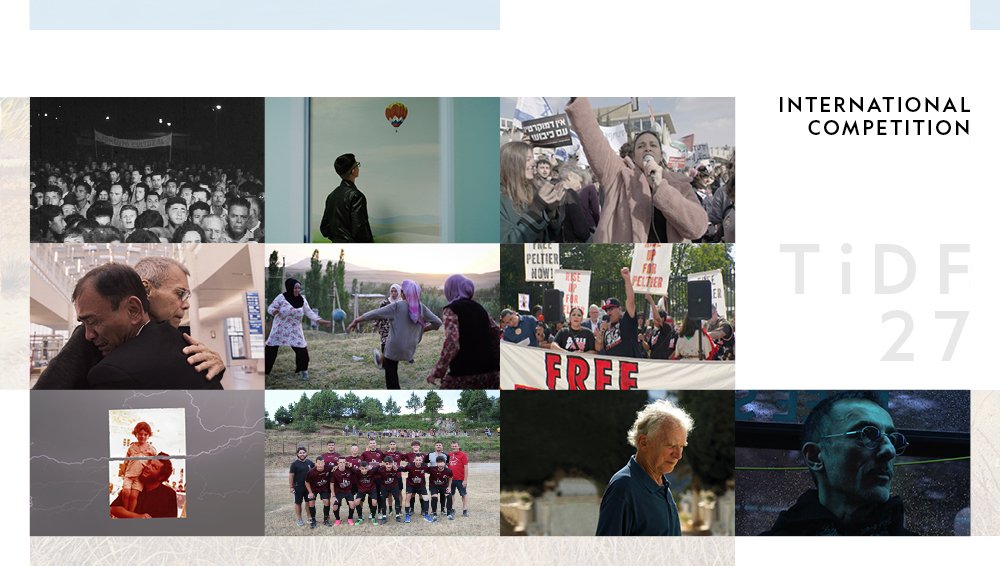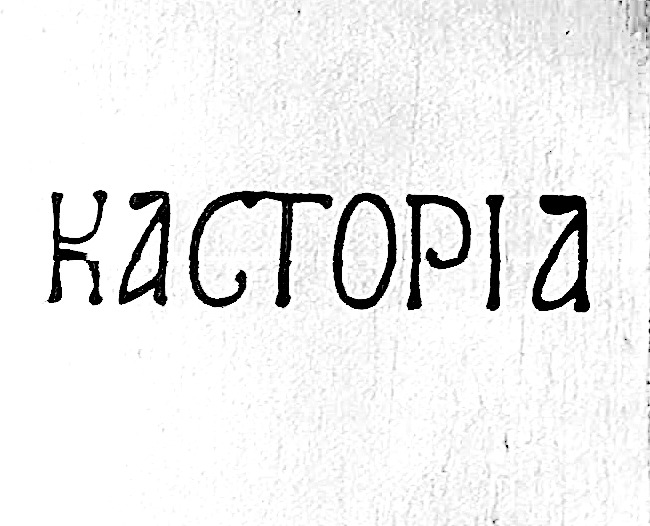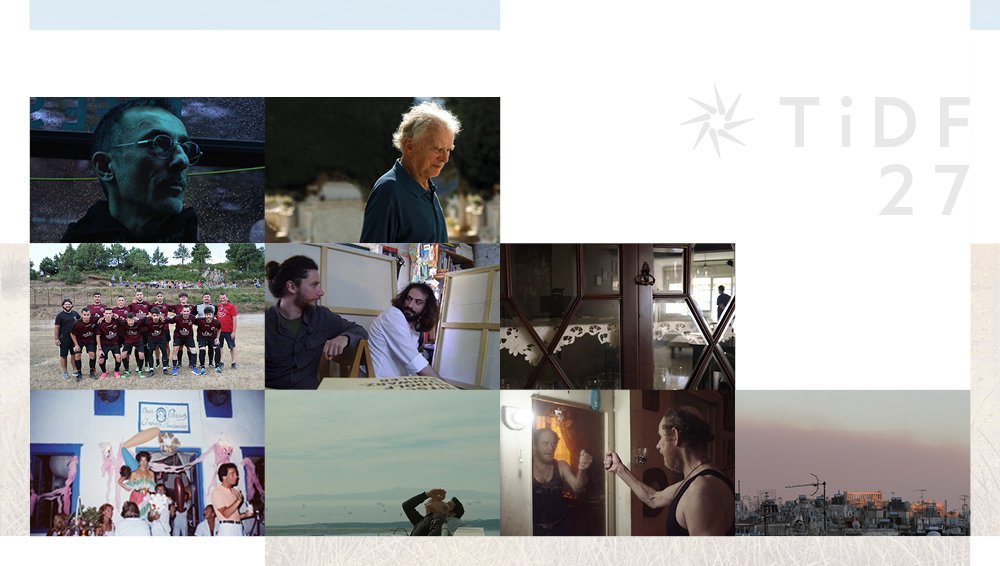Within the framework of the Docs in Thessaloniki Pitching Forum 2012 organized by the EDN and the 14th Thessaloniki International Film Festival, a Masterclass took place on Thursday, March 15, 2012, entitled Documentary Stories in New Media. Asta Wellejus, cross-media producer and developer, and CEO of Die Asta Experience, presented the Masterclass.
EDN representative Ove Rishoj Jensen introduced Asta Wellejus, welcoming her to Thessaloniki and recounting that when they first met at a conference for new media in Copenhagen she stood out because she placed significance on narration. “Amongst a crowd of people in expensive suits who talked exclusively about technology, there was this –then shy– girl who talked about how to narrate stories through different platforms; and I thought, there’s someone who understands the essence behind all this”, said Mr Jensen.
Ms Wellejus started the discussion by asking the audience members to introduce themselves with their professional capacity, in order to make the presentation as useful as possible for the specific crowd, which consisted of directors and producers from many countries. Ms Wellejus started her career right after her university studies, when Lars Von Trier asked her to develop a platform for the crossover of film, theater, interactivity and gaming. “I was 21 years old and was not sure how to start, but I really wanted to try”, she said. The specific project came across various obstacles, but she soon took over the job of CEO for Zentropa Interaction, the sector which dealt with anything that was interactive, from films, installations, web games, etc. She soon became interested in transmedia (the technique of telling stories across multiple platforms and formats using digital technologies) and founded the company Die Asta Experience, which deals with projects that use new technologies, evaluating and treating each case in the unique manner that it merits and requires.
Noting that the core of any transmedia project is narration, she said: “I will repeat this many times today: for me, the most important thing is to tell a story that will touch the audience. We may have novel approaches and new mediums of communication, but the story is what really matters. Sometimes people think that it will work to follow someone else’s successful example from a technological point of view, but this is not true. We return to the basic rules of narration and that is what the audience will judge us on; the difference is that now this audience may not be right in front of us, but could be viewing, for example, from China, during a different moment in time, evaluating from their own perspective”. Ms Wellejus’ advice to filmmakers: “Before you start panicking about costs and about how new technologies work, think about your central idea and if it’s something that speaks to people in faraway places, or not so faraway places. I am not interested in technology for the sake of technology. I know a lot about it and I can understand what kind of medium to use to tell a story, but technology per se has nothing to do with it”.
Continuing the Masterclass, Ms Wellejus emphasized issues that are common to professionals that work with transmedia, regardless of where they come from and where they work. “We are now seeing many similarities in projects from Canada or Germany, or anywhere, we learn the same lessons and develop narrative tools. For me, transmedia can be anything, regardless of its budget and form”. She noted that narration, financing and distribution are interconnected and mentioned specific projects that she has worked on during the last decade: during the Copenhagen Climate Summit 2009 her team created a virtual Earth using Google maps that depicted every corner of the planet and through which users could connect and take part in a virtual protest. She said that “people were connecting so fast that we were unable to count them. We expected about a million participants, but hadn’t really anticipated the huge numbers that wanted to participate. NGOs played a huge part in that; their strength should not be underestimated because they can reach a vast audience”.
Concerning artificial intelligence, which is employed in some of her productions, Ms Wellejus noted that one of the simplest examples of AI are the recommendations that an Amazon customer is offered from the site, “often provided by other users and creating an emotional impact”. She said that if stories are not produced, the audience will create them on its own. “Why do we tell stories: To talk about survival and identity, to record an emotional experience. New mediums are not magic wands. It’s important to discover what they can add to a story, what was missing before them and makes them useful. The tendency is to start small, take our project out there and see how it does”.
As far as the experiences offered by transmedia productions, usually used more effectively by NGOs, Ms Wellejus indicated some of their characteristics: “the feeling that you are there while you are not, the dilemmas created by different perspectives, and the role of detective and/or journalist that the user often assumes. The degree that the user is “allowed” to be involved in the development of the narrative needs to be moderated by how much it is of essence to do so, since the audience/user is not a professional storyteller”. As far as financing for such productions is concerned, there is no recipe or predetermined manner that works every time, like for more conventional documentaries. “It is important to collaborate with people or companies that have the same needs that you do. They may not need money like you do, but they may need access to a wider audience. You could have partners in the platform level, like Mozilla, partners in the distribution, production or even content level”.
Finally, Ms Wellejus presented some interesting examples of interactive platforms, like the Johnny Cash Project. “It’s a website that honors the musician, which works like a virtual “posthumous retrospective” and at the same time is the biggest collective artwork ever produced”. She concluded by saying that it is of the utmost important that a creator knows which the target audience for their production is. “It’s an anthropocentric approach, already followed by many companies. The questions are: Who is your audience? Where are they when they hear/see your story? What time of day is it? And, most importantly, what has emotional meaning for them?”.




